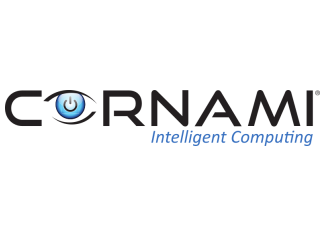Rapid adoption of large language models (LLMs) has created a critical need for sharing these models while preventing the users from copying, or reverse engineering, the models or the data they represent. Fully Homomorphic Encryption (FHE) provides a post-quantum approach to secure the publication of LLMs. Recent software and hardware developments will provide a way to perform this secure sharing at execution speeds comparable to inference done on unsecured LLMs. Dr. Rhines will review the emerging approaches and provide a roadmap for future developments that will make secure data sharing of LLMs pervasive.

Dr. Walden “Wally” Rhines
WALDEN C. RHINES is President & CEO of Cornami. He is also CEO Emeritus of Mentor, a Siemens business, focusing on external communications and customer relations. He was previously CEO of Mentor Graphics for 23 years and Chairman of the Board for 17 years. During his tenure at Mentor, revenue nearly quadrupled and market value of the company increased 10X.
Prior to joining Mentor Graphics, Dr. Rhines was Executive Vice President, Semiconductor Group, responsible for TI’s worldwide semiconductor business. During his 21 years at TI, he was President of the Data Systems Group and held numerous other semiconductor executive management positions.
Dr. Rhines has served on the boards of Cirrus Logic, QORVO, TriQuint Semiconductor, Global Logic and as Chairman of the Electronic Design Automation Consortium (five two-year terms) and is currently a director. He is also a board member of the Semiconductor Research Corporation and First Growth Children & Family Charities. He is a Lifetime Fellow of the IEEE and has served on the Board of Trustees of Lewis and Clark College, the National Advisory Board of the University of Michigan and Industrial Committees advising Stanford University and the University of Florida.
Dr. Rhines holds a Bachelor of Science degree in engineering from the University of Michigan, a Master of Science and PhD in materials science and engineering from Stanford University, a master of Business Administration from Southern Methodist University and Honorary Doctor of Technology degrees from the University of Florida and Nottingham Trent University.
Cornami
Website: cornami.com
Cornami's FracTLcore™ technology offers significant value to the data-driven market by enabling Fully Homomorphic Encryption (FHE) for Zero Trust. This advanced cryptographic method allows computations to be performed on encrypted data without needing to decrypt it, ensuring data privacy and security. In the context of Private Large Language Models (LLMs) for enterprise, FracTLcore™ technology addresses critical concerns around data confidentiality and compliance, which are paramount for industries such as finance, healthcare, and defense.
Enterprises can now leverage the power of LLMs while maintaining stringent privacy standards. This allows for the secure processing of sensitive information, such as customer data or proprietary business intelligence, without exposing it to potential breaches. The technology's ability to handle complex, encrypted computations efficiently ensures that performance is not compromised, making it suitable for real-time data analytics and decision-making processes.
Moreover, Cornami's innovative approach provides scalability and flexibility, accommodating the growing demands of data-driven applications. As the volume and sensitivity of data continue to rise, FracTLcore™ technology’s support for FHE, positions it as a critical enabler of secure, privacy-preserving AI and machine learning solutions. This ensures that enterprises can confidently adopt advanced technologies while safeguarding their most valuable asset: their data.







